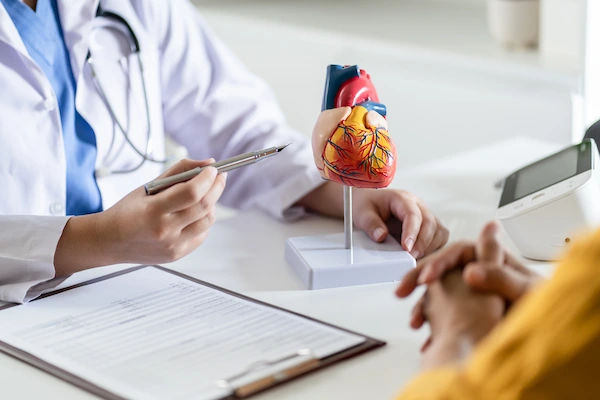Natural Remedies for Swollen Legs and Feet
Swollen legs relief with safe, science-backed tips. Causes, home care, and when to see a doctor. No quick water retention cure treats the cause.


Introduction
Swollen legs and feet are common and uncomfortable. Whether your swelling comes from a long day on your feet, hot weather, travel, pregnancy, or an underlying health issue, there are practical steps you can take at home to feel better. Swelling, also called oedema, happens when extra fluid collects in the tissues. This daily discomfort often causes heaviness and tightness, making shoes feel restrictive and walking less comfortable. The good news? With the right strategies, you can manage symptoms, improve circulation, and reduce fluid build-up. This guide explains what causes swelling, safe ways to relieve swollen legs at home, how to track what’s helping, and when to speak to a healthcare professional. There is no universal “water retention cure”, but addressing the root cause helps you make lasting progress.
Why Legs and Feet Swell (and Why It Matters)
Swelling in the lower legs, ankles, and feet—medically known as oedema—develops when excess fluid shifts from your blood vessels into surrounding tissues. Oedema may be harmless after sitting, standing, or travelling for long periods, but in other cases, swelling can point to circulation problems, lymphatic drainage issues, or organ-related conditions.
Consult a Top General Practitioner for Personalised Advice
Common reasons why swelling occurs include:
• Prolonged sitting or standing, especially during travel or desk-based work.
• Hot weather which widens blood vessels and allows fluid to move into tissues.
• A high-sodium diet causes the body to hold on to water.
• Pregnancy, where expanding blood volume and pressure on pelvic veins can slow circulation.
• Chronic venous insufficiency, when weakened valves in leg veins allow blood to pool.
• Varicose veins disrupt normal blood return to the heart.
• Certain medications, such as calcium channel blockers (including amlodipine), steroids, NSAIDs, hormone treatments, and some diabetes medicines.
• Injury or surgery affecting the leg or foot.
• Infections or inflammatory conditions involving the lower limbs.
• Lymphoedema, where lymph drainage is impaired.
• Heart, kidney, or liver conditions which can lead to significant fluid retention.
• Deep vein thrombosis (DVT), a blood clot in the leg.
Understanding why swelling occurs helps you choose the right steps to manage it—and to recognise when it’s a sign of something more serious.
Safety First: When Swelling Needs Urgent Care
Some symptoms should never be ignored. Seek emergency medical attention immediately if you experience:
• Sudden swelling in one leg, especially with warmth, redness, or pain (possible DVT).
• Swelling combined with shortness of breath, chest pain, or coughing up blood (possible pulmonary embolism).
• Sudden widespread swelling during pregnancy with severe headache, visual changes, or upper abdominal pain (possible pre-eclampsia).
• Swelling accompanied by fever, spreading redness, or skin that is hot and tender (possible infection).
Make an appointment with a healthcare professional soon if you notice:
• New swelling or swelling that is worsening, especially if only one leg is affected.
• Swelling in combination with known heart, kidney, or liver issues.
• Persistent swelling that does not improve with home care.
• Painful varicose veins, skin changes, or ulcers.
• Swelling after starting a new medication.
Prompt action helps prevent complications and ensures that underlying conditions are treated early.
Swollen Legs Relief You Can Start Today
The most effective strategies focus on improving circulation, moving excess fluid out of the legs, and protecting the skin. While one change can help, you’ll likely see the best results by combining several.
Keep Blood and Lymph Moving
Movement acts as a pump for your veins and lymphatic vessels. Staying still allows fluid to collect in the lower legs.
Try incorporating these habits:
• Take a movement break every hour if you sit or stand for long periods. Even 2–3 minutes of walking helps.
• Point and flex your feet 10–20 times to encourage fluid return toward the heart.
• Avoid crossing your legs for long durations, as this restricts blood flow.
• Wear supportive footwear that doesn’t compress the top of the foot or ankle.
Gentle, frequent activity matters more than long exercise sessions.
Elevate Your Legs the Right Way
Elevation is simple but extremely effective when done correctly.
• Raise your legs so your feet are above the level of your heart—on a pillow stack or leg rest.
• Do this for 15–20 minutes, ideally a few times a day.
• Avoid placing cushions directly behind the knees for long stretches, as this can reduce blood circulation.
If you can comfortably lie on the sofa and rest your legs up a wall, this provides a strong gravitational assist.
Consider Compression Socks
Compression stockings gently apply pressure to help push fluid upward.
• Over-the-counter options (such as 15–20 mmHg) are suitable for mild swelling or long periods of sitting and standing.
• Put compression socks on first thing in the morning before swelling begins or worsens.
• Remove them at night unless advised otherwise by a clinician.
• If you experience pain or skin discolouration while wearing them, stop and seek advice.
Compression is especially helpful if you have varicose veins or venous insufficiency.
Smart Hydration and Sodium Sense
Fluid balance is closely linked to diet and hydration.
• Drink enough water throughout the day; dehydration can trigger the body to hold onto fluid.
• Reduce excess sodium. Aim for less than 2,300 mg per day, or lower if a clinician advises it.
• Be mindful of processed foods, sauces, soups, crisps, tinned items, restaurant meals, and takeaway foods.
• Try flavouring meals with herbs, lemon, pepper, or vinegar instead of relying on salt.
Small, consistent changes often lead to noticeable improvement.
Eat for Balance (Potassium-Rich Foods—with Care)
Potassium helps counteract sodium and supports fluid balance.
Examples of potassium-rich foods include:
• Leafy greens
• Beans and lentils
• Potatoes and sweet potatoes
• Oranges and bananas
Important: If you have kidney disease, take certain blood pressure medicines, or are on potassium-sparing diuretics, speak to a clinician before increasing potassium-rich foods.
Medication Awareness
Medications can sometimes cause fluid retention. If swelling started after beginning a new treatment:
• Speak with the prescriber who issued the medication.
• Do not stop taking any prescribed medication without medical advice.
There may be alternative options or dosage adjustments.
Skincare to Prevent Complications
Swelling stretches the skin, making it more fragile and prone to infection.
Support skin health by:
• Keeping the skin clean to avoid bacteria build-up.
• Moisturising daily to prevent dryness and cracking.
• Checking for blisters, sores, or redness—especially if you have diabetes or reduced sensation.
Well-cared-for skin reduces the risk of cellulitis, a painful bacterial infection.
Support Your Veins and Posture
These strategies help reduce pressure on your leg veins:
• Use compression if recommended.
• Walk regularly and elevate your legs during rest periods.
• Avoid sitting in one position for hours, especially with feet flat on the floor.
Even gentle, frequent movement helps more than long periods of stillness.
Travel and Work Tips
Swelling is very common during travel or prolonged sitting.
For long flights or driving:
• Walk the aisle or take standing breaks when possible.
• Stretch and flex your feet and ankles while seated.
• Wear compression socks if previously advised.
For desk or standing jobs:
• Alternate between sitting and standing.
• Use a footrest to encourage occasional elevation.
• Set reminders to get up and move every hour.
What About Soaks, Massage, or Supplements?
You may see popular remedies online, but evidence varies.
• Epsom salt foot soaks can feel relaxing, but do not remove fluid from tissues. Avoid if you have diabetes or reduced sensation.
• Gentle massage may provide comfort, and lymphatic drainage massage is used for lymphoedema when performed by trained specialists. Never massage a leg if a DVT is suspected.
• Herbal or over-the-counter “water pills” can be risky and are not recommended without medical supervision.
• Magnesium may help some people with swelling linked to PMS. Always check with a clinician first if you have kidney issues or take other medicines.
Is There a True "Water Retention Cure"?
There isn’t one cure because swelling has many possible causes. The most effective plan addresses the root cause:
• Venous insufficiency: movement, compression, elevation, and sometimes medical procedures.
• Medication-related swelling: dosage adjustments or alternative medicines.
• Lymphoedema: specialist-guided programme including compression, exercise, and skin care.
• Heart, kidney, or liver conditions: medical therapy and monitoring.
• Salt-related swelling: reduced sodium intake and improved hydration.
Think of your approach as a personalised toolkit rather than a single solution.
A Simple, Safe Daily Routine to Try
Morning:
• Put on compression socks if you use them.
• Do gentle ankle pumps and calf stretches before getting out of bed.
Daytime:
• Take small movement breaks every hour.
• Drink water regularly.
• Choose lower-sodium options when eating.
Evening:
• Elevate your legs while relaxing.
• Do ankle circles and calf raises while sitting.
• Moisturise your legs and inspect your skin.
Sleep:
• If pregnant, sleeping on your left side can improve circulation.
• Keep bedding light around your lower legs and feet.
Track What Helps
Keeping notes helps pinpoint patterns.
• Note when swelling improves or worsens—time of day, heat exposure, long sitting or standing, travel, or specific foods.
• Write down new medications and whether swelling began after starting them.
Sharing this information with your clinician helps guide diagnosis and treatment.
Conclusion
Swollen legs and feet are uncomfortable, but the situation is often manageable with the right approach. By improving circulation, reducing sodium, staying hydrated, and using compression when appropriate, many people find noticeable relief. Tracking what affects your swelling helps identify patterns and prevents future flare-ups. While there is no one single “cure” for water retention, consistent daily habits and timely medical advice can lead to lasting improvement. Listen to your body and seek help when something feels unusual.
Consult a Top General Practitioner for Personalised Advice
Consult a Top General Practitioner for Personalised Advice

Dr. Mainak Baksi
General Practitioner
13 Years • MBBS , MD (MPH)
Howrah
Mainak Baksi Clinic, Howrah
(50+ Patients)

Dr. Utsa Basu
Diabetologist
14 Years • MBBS , MD
Barasat
Diab-Eat-Ease, Barasat
(75+ Patients)

Dr. Pinaki Mukhopadhyay
General Physician/ Internal Medicine Specialist
32 Years • MBBS
Kolkata
MCR SUPER SPECIALITY POLY CLINIC & PATHOLOGY, Kolkata
(25+ Patients)

Dr. Tapabrata Ray
General Physician/ Internal Medicine Specialist
4 Years • MBBS,DGM,CPMeC,ACMDC
Kolkata
MCR SUPER SPECIALITY POLY CLINIC & PATHOLOGY, Kolkata

Dr. Sougata Kumar
General Practitioner
8 Years • MBBS
East Midnapore
VIVEKANANDA SEBA SADAN, East Midnapore
Consult a Top General Practitioner for Personalised Advice

Dr. Mainak Baksi
General Practitioner
13 Years • MBBS , MD (MPH)
Howrah
Mainak Baksi Clinic, Howrah
(50+ Patients)

Dr. Utsa Basu
Diabetologist
14 Years • MBBS , MD
Barasat
Diab-Eat-Ease, Barasat
(75+ Patients)

Dr. Pinaki Mukhopadhyay
General Physician/ Internal Medicine Specialist
32 Years • MBBS
Kolkata
MCR SUPER SPECIALITY POLY CLINIC & PATHOLOGY, Kolkata
(25+ Patients)

Dr. Tapabrata Ray
General Physician/ Internal Medicine Specialist
4 Years • MBBS,DGM,CPMeC,ACMDC
Kolkata
MCR SUPER SPECIALITY POLY CLINIC & PATHOLOGY, Kolkata

Dr. Sougata Kumar
General Practitioner
8 Years • MBBS
East Midnapore
VIVEKANANDA SEBA SADAN, East Midnapore
More articles from General Medical Consultation
Frequently Asked Questions
Q.What’s the fastest way to reduce swelling after a long day?
Elevate your legs above heart level, move your ankles and calves, hydrate, and avoid salty snacks.
Q.Are compression socks safe?
Yes, when used correctly. Avoid if you have arterial disease, severe neuropathy, ulcers, or pain with compression. Always check with a clinician if unsure.
Q.Can drinking more water help with swelling?
Yes, hydration supports normal fluid balance. Pair it with reduced sodium and regular movement.
Q.Is there a safe water retention cure at home?
There is no universal cure. Support circulation, reduce salt, elevate legs, stay active, and consult a clinician before using water pills.
Q.When should I see a doctor?
Seek urgent care for sudden one-sided swelling, chest pain, shortness of breath, or concerning pregnancy symptoms. Book an appointment if swelling is new, persistent, or painful.

.webp)


